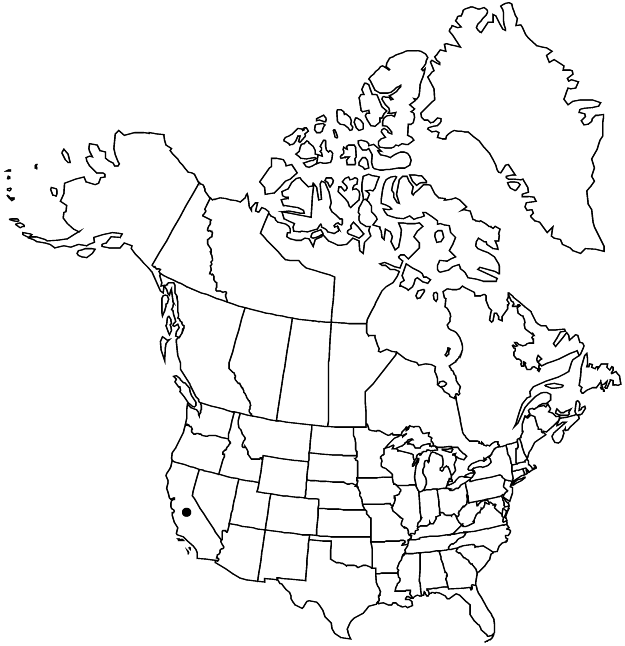Limonium ramosissimum
Bull. Soc. Hist. Nat. Afrique N. 27: 244. 1936.
Leaves more than 10, all in basal rosettes, living at anthesis, essentially sessile; blade obovate, 2–4 × 0.7–1.4 cm, base tapered, margins ± entire, apex rounded; main veins 1–3 per leaf, ± parallel, not obviously pinnate. Inflorescences: axes not winged or angled, 15–25 cm × 1–1.5 mm, glabrous; nonflowering branches absent; spikelets moderately to densely aggregated at branch tips, internodes 2–3 mm; subtending bracts 1.5–5 mm, rounded to broadly acute, surfaces and margins glabrous; flowers 1–2 per spikelet. Flowers: calyx whitish distally with reddish-brown ribs, funnelform, 4–5 mm, glabrous; tube 3–4 mm, lobes spreading, 1 × 1 mm; petals lavender to pink, exceeding calyx ca. 2–3 mm. Utricles unknown. 2n = 24, 27.
Phenology: Flowering Jun.
Habitat: Coastal salt marshes
Elevation: 0 m
Distribution

Introduced; Calif., Mediterranean region
Discussion
Limonium ramosissimum is abundantly naturalized in Carpenteria Salt Marsh, Santa Barbara County (C. F. Smith 1998). Its identification is somewhat problematic, for lack of comparative material in American herbaria and the immense size and complexity of the genus in Mediterranean areas; our plants appear to match specimens identified and keyed as Limonium ramosissimum from southern Europe and northern Africa, but further study is needed. S. Pignatti (1972) recognized five subspecies in that polymorphic species, and E. McClintock (as reported by Smith) identified our adventive as subsp. provinciale (Pignatti) Pignatti; however, it seems premature to assign our taxon to any of the subspecies without detailed comparison with European material. Plants have been seen in California nurseries and gardens under the name L. psilocladon (Boissier) Kuntze (as “psiloclada”), generally regarded as a synonym of L. ramosissimum. Another very similar species is L. hyblaeum Brullo, native to Sicily, which is thought to be naturalized around harbors and coastal marshes in southern Australia (D. B. Foreman et al. 1993–1999, vol. 3; J. Edmondson, pers. comm.). At its present naturalized location, L. ramosissimum may be a threat to the endangered Cordylanthus maritimus Nuttall, with which it grows (W. R. Ferren Jr., pers. comm.).
Another introduced and naturalized Limonium, as yet unidentified to species and probably from Mediterranean regions, has recently been collected in salt marshes in San Diego County, (Lawhead 32, SD, UC). It is similar in stature and inflorescence characters to L. ramosissimum but differs in having longer, thinner-textured leaves to 8 × 1 cm, with more gradually attenuate bases and apiculate blades, each having a single medial vein. It appears that non-native species of Limonium are being grown by the cut-flower industry in the area, escaping, and establishing, perhaps to the detriment of native species.
Selected References
None.